July 2024
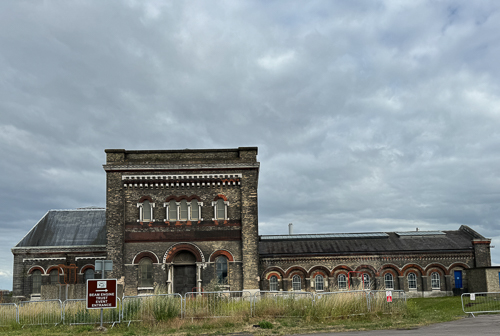
The Crossness Pumping Station is a former sewage pumping station designed by the Metropolitan Board of Works’ chief engineer, Sir Joseph Bazalgette, and architect Charles Henry Driver.
In the 19th century, London’s population numbered around 2 million. The city suffered fatal epidemics of cholera, and thousands died as the Victorians had no known cure.
It was widely believed breathing in ‘miasma’, foul contaminated air, caused disease and death. London-based physician Dr John Snow put forward the theory that the condition was water-borne, and you can read my post about that here.
In 1853-54 cholera claimed a further 10,738 victims. Then in the summer of 1858, temperatures averaged 95 degrees F. The stench from the Thames, the ‘Great Stink’, became overwhelming for those nearby, including Parliament, who finally stood up and took notice.
Enter Sir Joseph Bazalgette, the Victorian engineering mastermind and public health visionary behind the vast sewage system that Londoners still rely on today. Prior to Bazalgette’s system, sewage was dumped straight into the Thames. Bazalgette devised a system to take the sewage out of London and, well, simply deposit it further downriver where no one cared.
The Crossness Pumping Station, abandoned after 88 years of service, is now a museum divided into two parts. It took forty years, but two of the magnificent Beam Engines have been restored. Two have been left in the state they were found when restoration began to give a wonderfully visual comparison. The four are named “Victoria”, “Prince Consort”, “Albert Edward” and “Alexandra”.
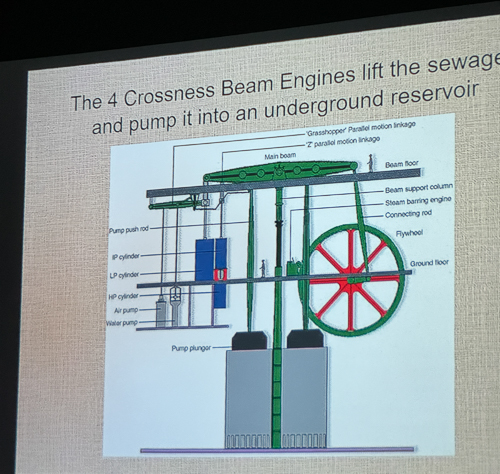
A schematic of the Beam Engines as they are too large to take in as one
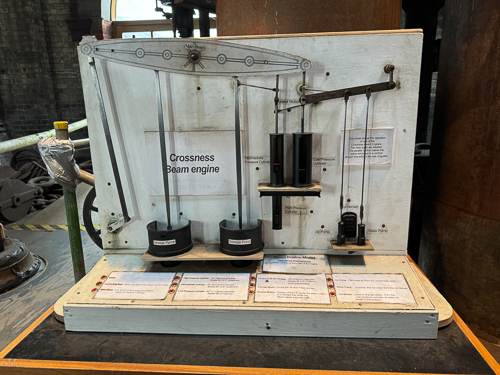
*
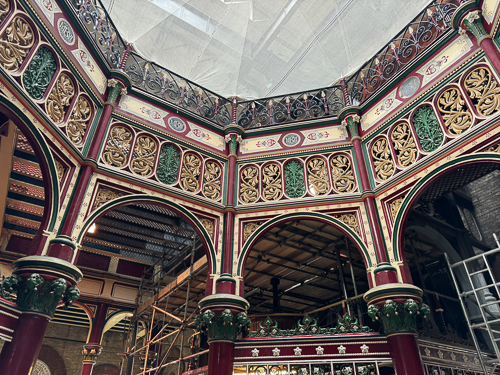
The Octagon is the entry to the guts of the Crossness Pumping Station
The Octagon is made of Victorian cast iron and is imbued with the Metropolitan Board of Works MBW symbol and other meaningful ornamentation.
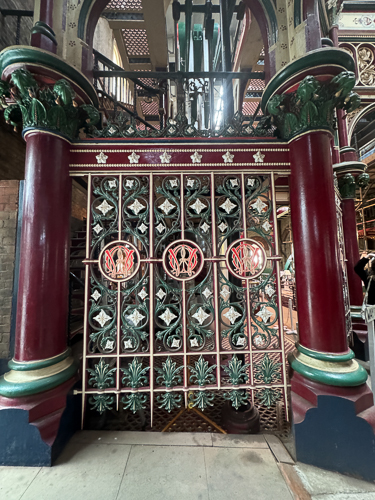
*
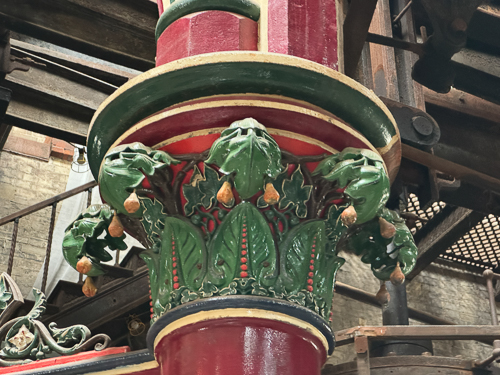
The Column Capitals are made up of leaves and fruit of the fig tree and Senna Pods – both good cures for constipation.
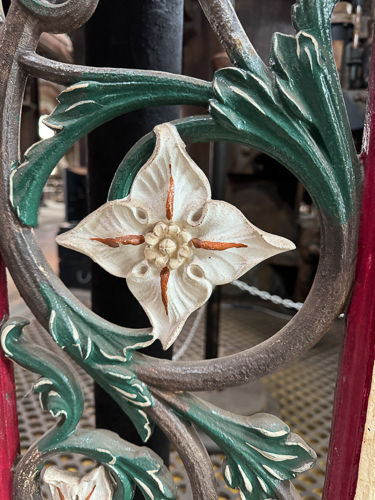
To counter this, the panels between the columns are ornamented with 4-leaved Dogwood and the 5-leaved Bramble, both useful in combating diarrhea.
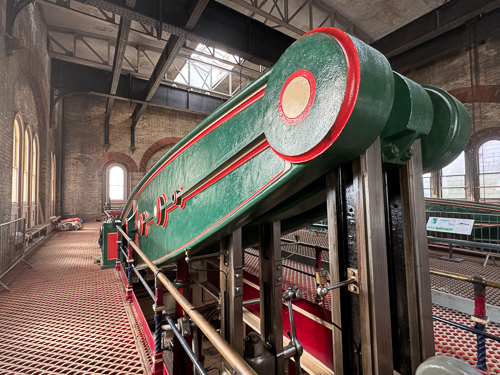
At 11 revolutions per minute, 6 tons of sewage per stroke per engine were pumped up into a 27-million-imperial-gallon reservoir, and released into the Thames during the ebbing tide
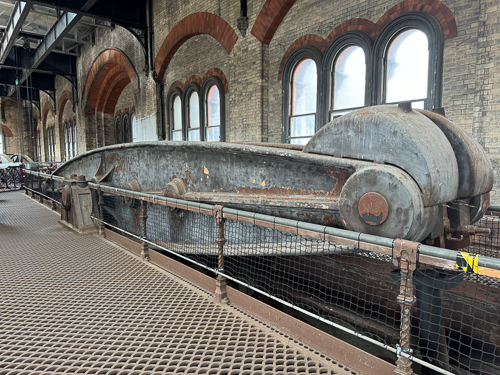
*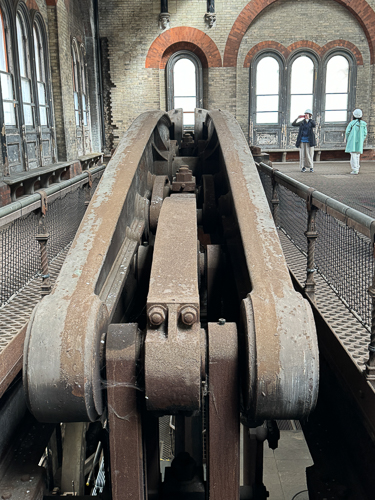
*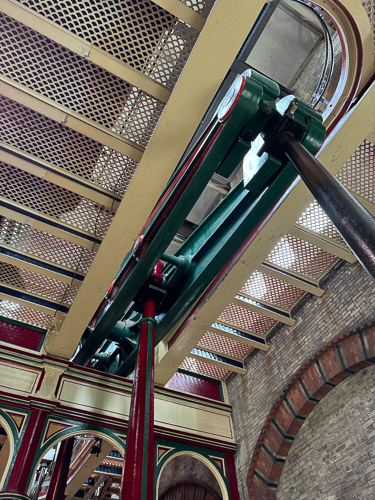 The steam required to power these engines was created by 12 Cornish boilers with single “straight-through” flues situated in the Boiler House to the south of the Engine House, which consumed 5,000 tons of Welsh coal annually.
The steam required to power these engines was created by 12 Cornish boilers with single “straight-through” flues situated in the Boiler House to the south of the Engine House, which consumed 5,000 tons of Welsh coal annually.
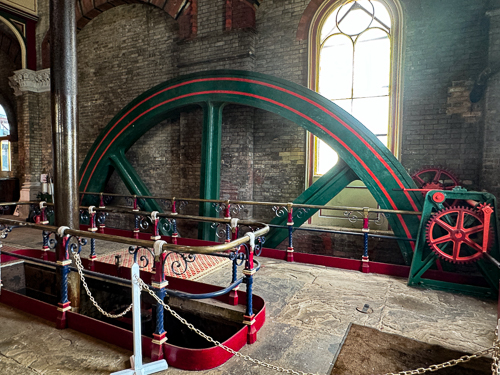
*
*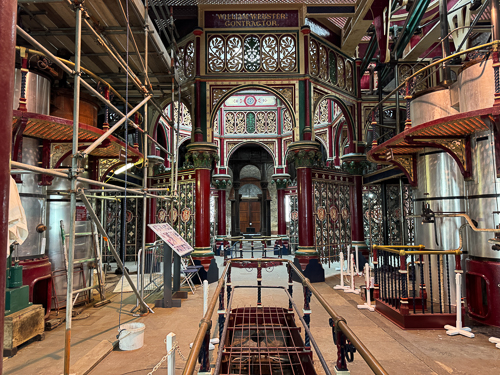
*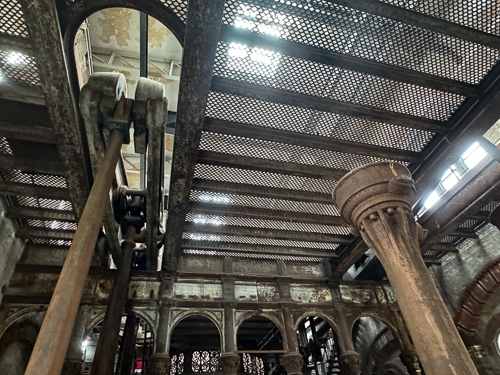
*
*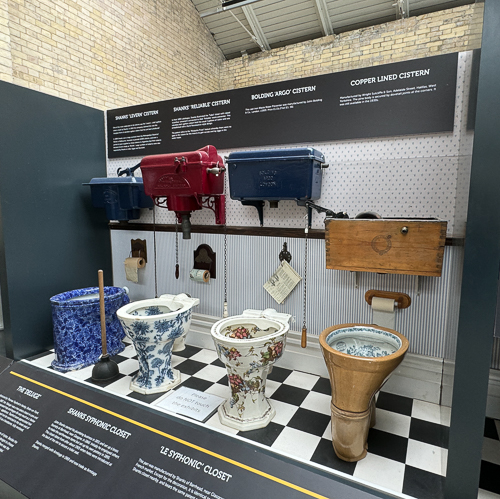 *
*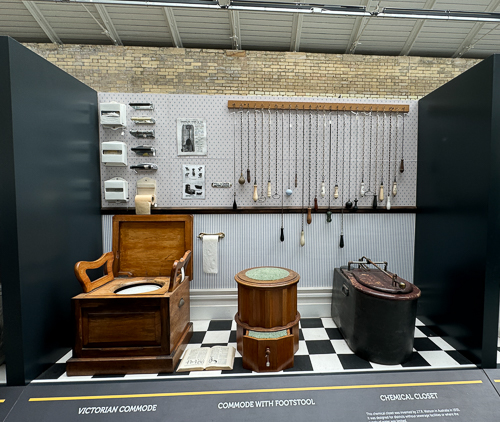
Over the years, the sewage dumping below London has been mitigated. In 1882, a Royal Commission recommended that the solid matter of sewage be separated and that only the liquid portion be allowed to flow into the river. In 1891, sedimentation tanks were added to the works, and the sludge was carried by boats and dumped further out into the estuary. Eventually, purification was added to the system, but removing the sewage of a town the size of London is still a challenge.
The Thames Tideway Tunnel is being built to relieve the pressure on the old system. It will run under London utilizing gravity to transfer the waste eastwards for treatment. It is due for completion sometime in 2024.